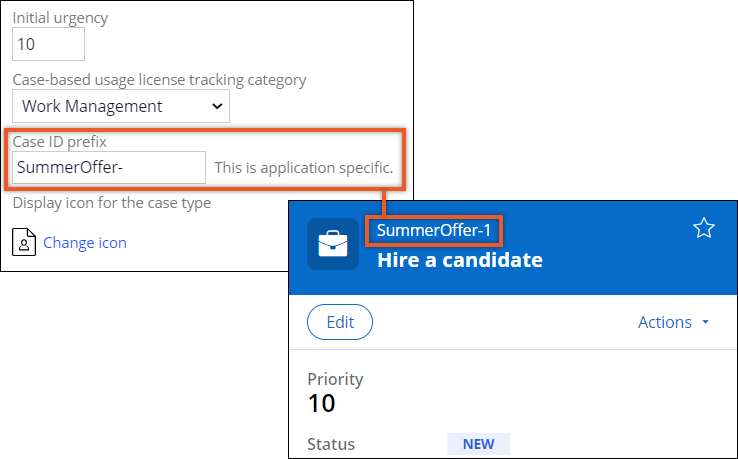Changing the case ID format
Change the case ID format to help case workers distinguish between instances of different case types. Custom case IDs can help users save time and simplify the organization of work by improving readability. For example, case IDs of the type Loan Request start with the prefix LORE-, and case IDs of the type New Account start with the prefix NACC-.
For each case, your application generates a unique case ID in the following format: prefix-integer. By default, a case ID contains the following elements:
- Prefix
- A single character that your application derives from the name of the case type that you provide when you create or import a case type, and a hyphen. Prefixes are required, but they do not need to be unique.
- More than one case type can share a prefix.
- Integer
- A number that increases by one each time that you create a case. You cannot count the number of cases in your application based on the integer of a case ID because the system reserves case IDs before successfully creating a case.
The following examples of case IDs illustrate the different formats that you can use:
- C-100
- JobApp-420
- MORT-763
- In the navigation pane of App Studio, click Case types, and then click the case type that you want to open.
- On the Settings tab, click General.
- In the Case ID prefix field, enter a prefix for your case ID,
for example, JobApp-.When you enter the prefix, consider the following guidelines:
- A case ID prefix can consist of a maximum of 32 characters, including a hyphen at the end. If you do not enter a hyphen at the end of the prefix, the system adds it automatically after you save the settings.
- Do not use the ampersand (&) and double quotation marks (") in the case ID.
- Click Save.
- Case ID format
Your application generates a unique ID for each case to help case workers distinguish between instances of different case types.
Previous topic Customizing the case icon Next topic Case ID format

